Here we go:
I had to fab a box to house the heat exchanger for the radiant floor.
2) the box cut into the plywood wall mount.
3) the heat exchanger tied into the old system. This thing did not want to seal at the connections. I had to redo this about 3 times. I finally change to brass threaded unions.
4) the panels tied into the 120 gal tank
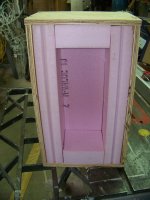

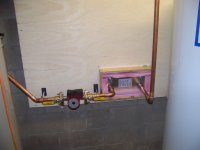
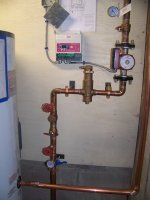
Okay now I had to lift the panels up on to the steel frame and the tractor would not reach. So a tractor mod was in order.
1)I welded a reese receiver to the top of the bucket.
2) I drill a match hole in a 2"x 2" x 1/4" sq tube.
3) the tube is 10' with a plate welded at the end for a connector.
4) the first panel ready for transport to the frame. 120 LBS. I built it with the intent that I could add reinforcements in the future.
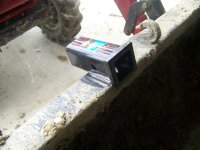
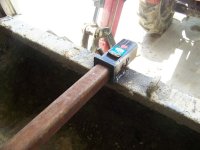
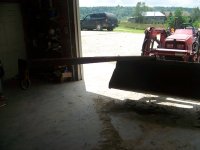
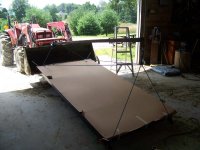
1) veiw from the drivers seat.
2) lifting to set panel #1
3) panel #2
4) panel #3 the cardboard is on there to keep the heat to a minimum till I get water in the system.

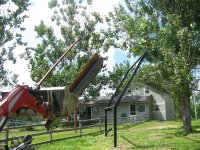
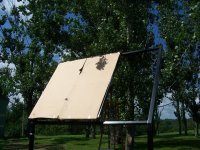
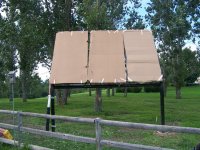
Next was running the copper pipes and sweating all the connections and running the wires.
1) the heat sensors
2) the sensors mntd. at the out pipe at the top of the panel. I install 2 one that is connected to the controller and the other is there just in case
the first one fails. a third is installed at the bottom of the storage tank out for a temp differantial.
3)the insulation of the pipe at the panels this is not complete but i wil finish this coming weekend.
4) The panels uncovered and pressure tested and the antifreeze pumped in.
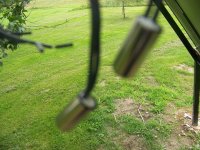
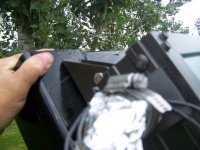
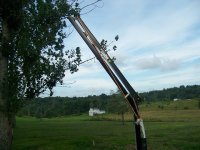
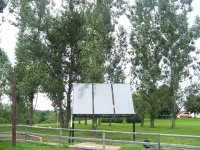

I then connected the electrical and turn the system on.





The temp out side this evening was 61degs. and cloudy. the panels were uncovere for 2 hours before I turned the system on. Here is the good news The temp at the top of the panels was 74 and at the bottom of the tank coil 64Deg. the circulator started and the top temp whent to 84Deds. this was at 6:30 pm EST no sun and cool out.




After about a 1/2 hr. the water was at 74Degs at the panel and 64 at the tank.
I will post as the week goes on.
Phil
















